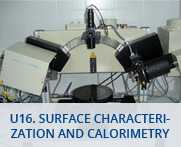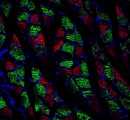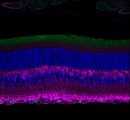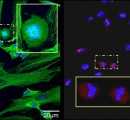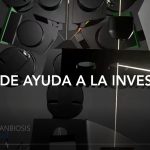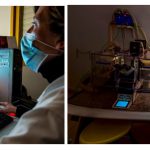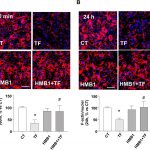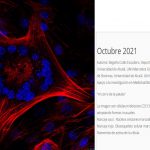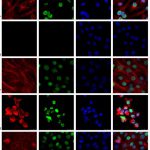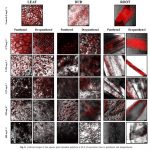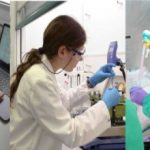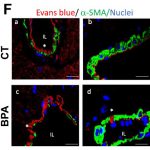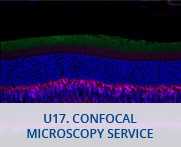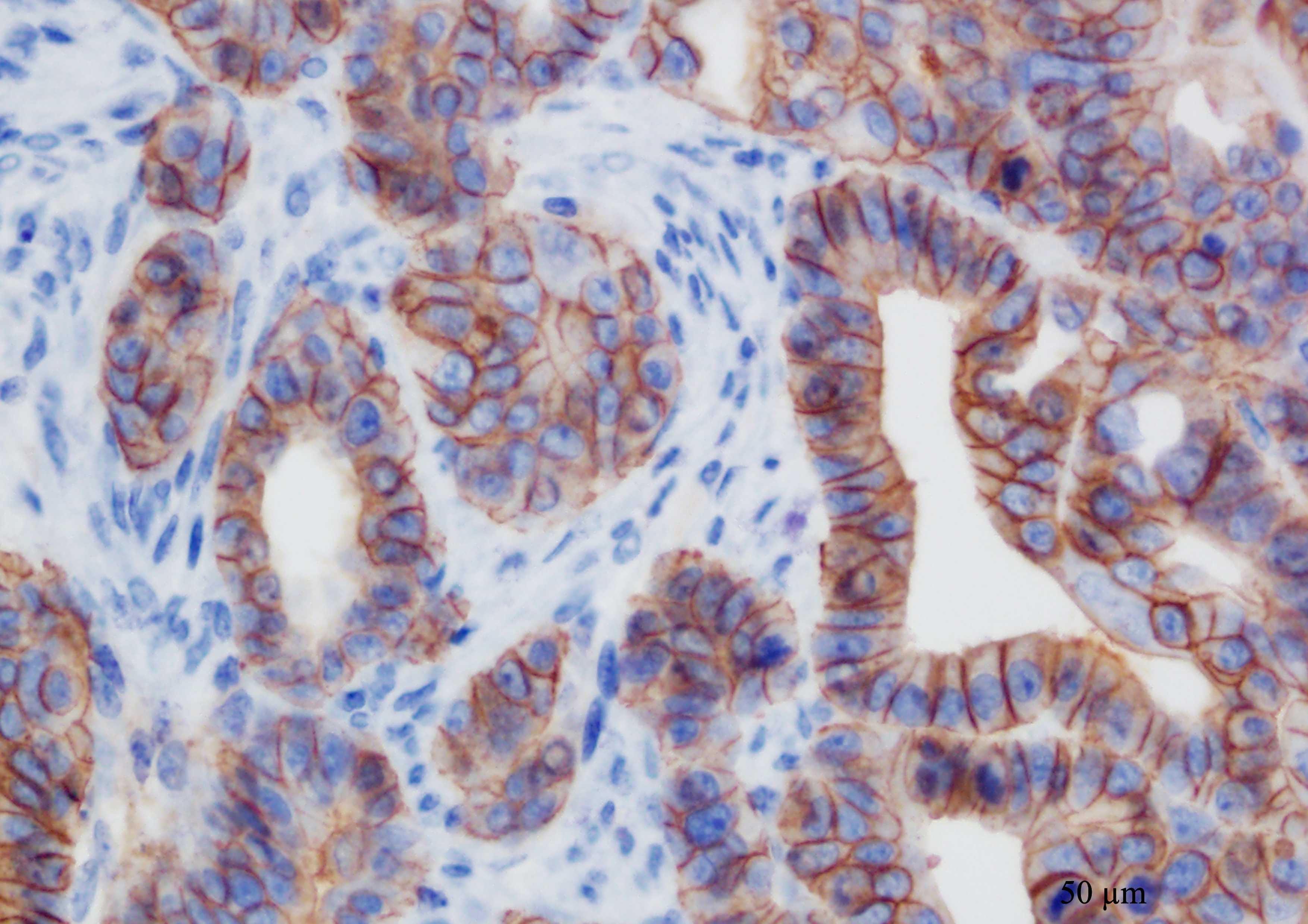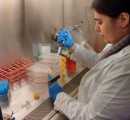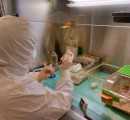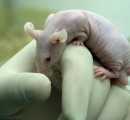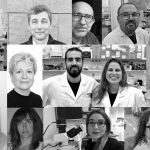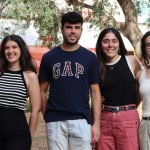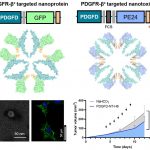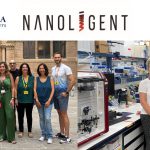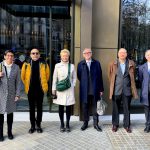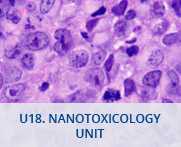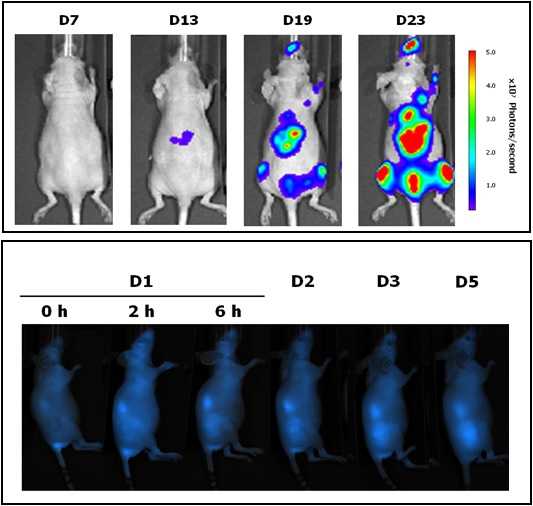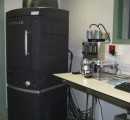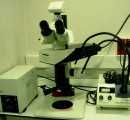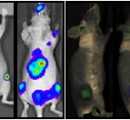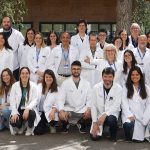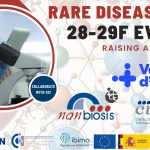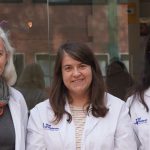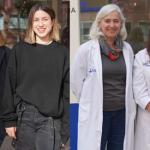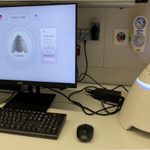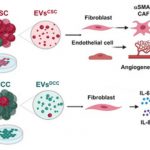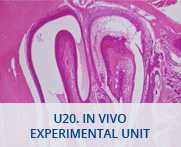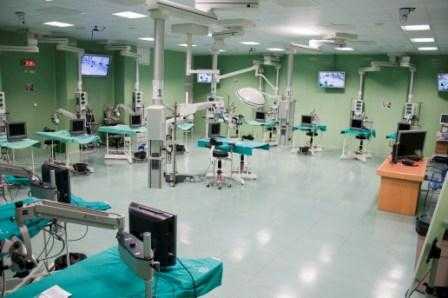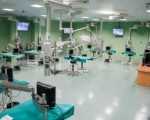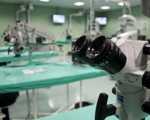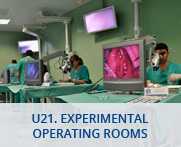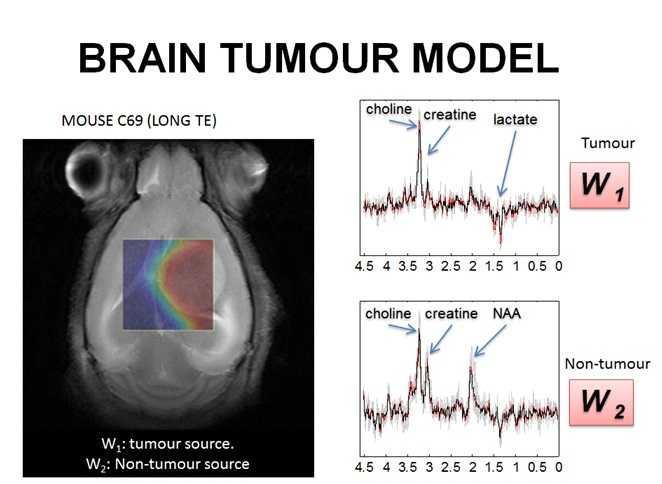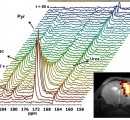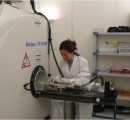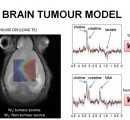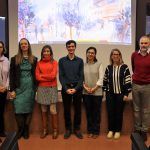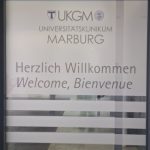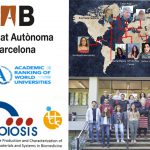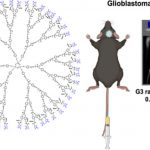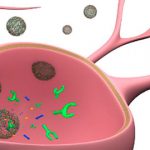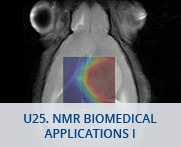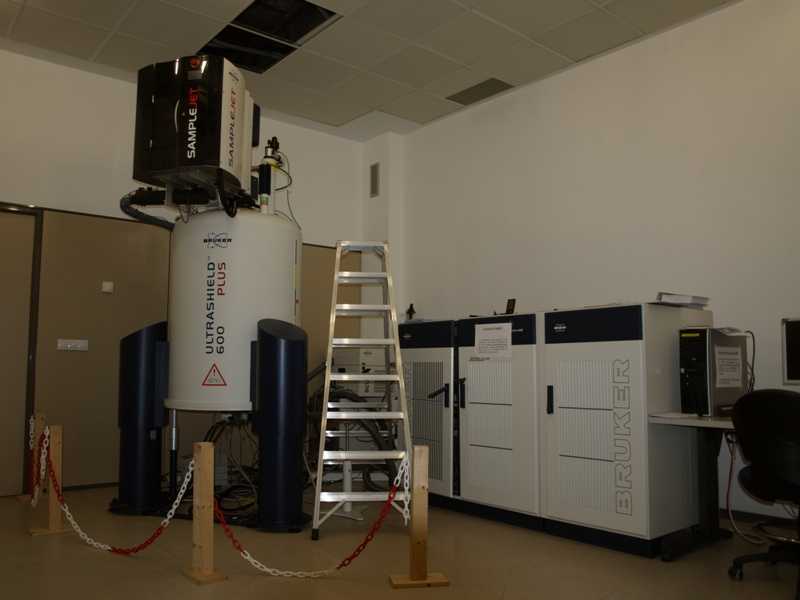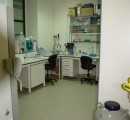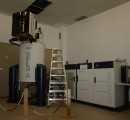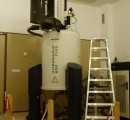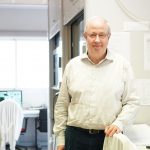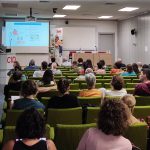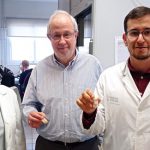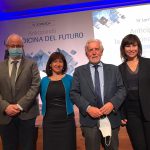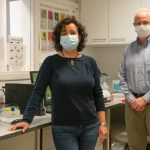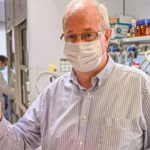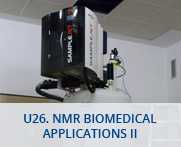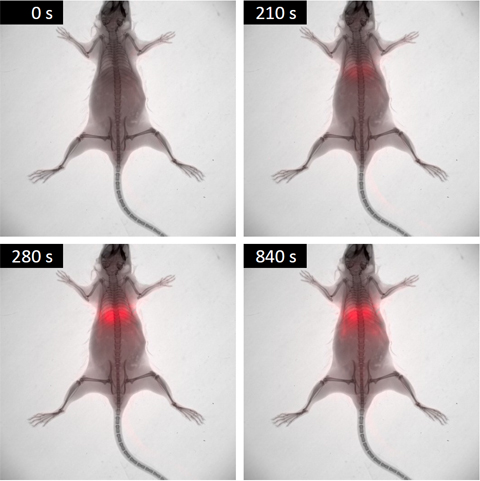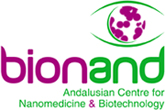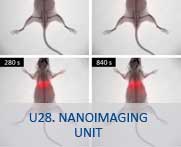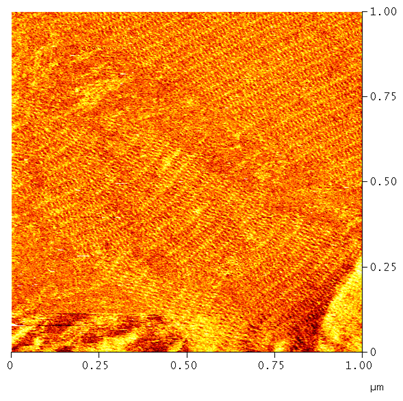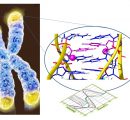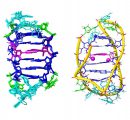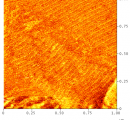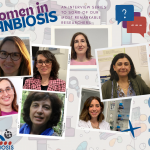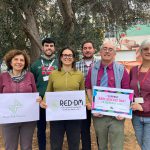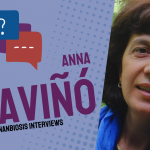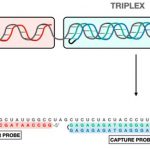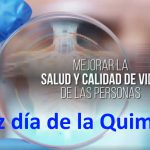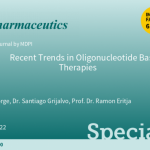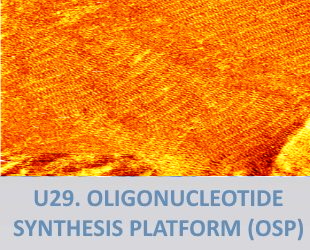U16. Surface Characterization and Calorimetry Unit
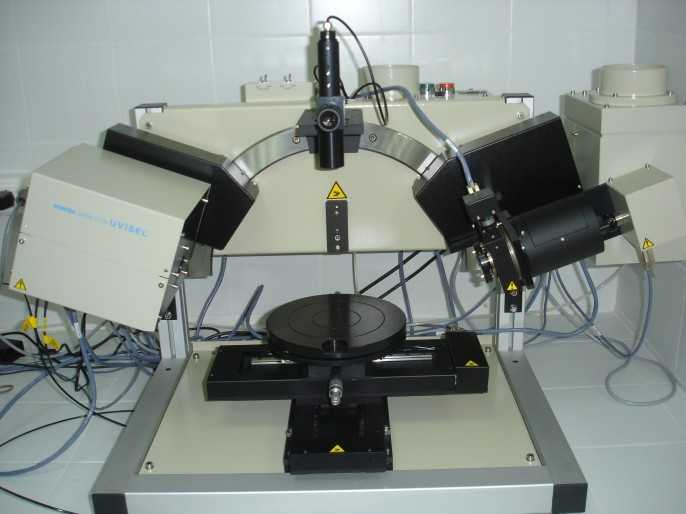

U16. Surface Characterization and Calorimetry Unit
- Scientific Director: Prof. M Luisa González Martín mlglez@unex.es
- Scientific Coordinator: Prof. M Luisa González Martín mlglez@unex.es
- Entities: Universidad de Extremadura
- Address: Avda Elvas, S/N, 06006, Badajoz, Spain
- Phone: +34 924 289 532
- Web: WEB
 |
Description
The purpose of this Unit is to give support for the analysis of surface composition to researchers. This facility allows a broad knowledge about the chemistry of surfaces by the combination of the information of elements presents and their coordination state, given by the XPS technique, and the molecular structure of surface provided by the ToF-SIMs equipment. Its capabilities permit to work with extended and powdered solids, including those from biological origin as cells and bacteria. The characteristics of thin films on surfaces, as thickness, composition or electrical conductivity, can be also analyzed in this unit by spectroscopic ellipsometry. In addition, calorimetric analysis can be performed to test surface reactivity on powdered solids. ITC calorimetry facility is also under the Unit scheme.
Surface analysis laboratory fulfils the ISO9001:2008 (ES050823-1). ![]()
Services
- FOR THOSE SERVICES IDENTIFIED AS OUTSTANDING, AT LEAST 20% OF THEIR CAPACITY IS OPEN UNDER COMPETITIVE ACCESS. SEE ANNEX 1 OF ACCESS PROTOCOL FOR DETAILS ON % OF OPENNESS FOR EACH SERVICE
Equipments
- U16-E01. TAM III isothermal nanocalorimeter system. (TA Instruments) – Temporarily OUT OF ORDER
- U16-E02. UVISEL ellipsometer (Horiba JovinYvon)
- U16-E03. K-Alpha X-ray photoelectron spectroscopy (XPS) system (Thermo)
- U16-E04. ToF-SIMS 5 Time-of-flight secondary-ion mass spectrometry system (ION TOF )
- U16-E05. DROP SHAPE ANALYZER – DSA100E – Goniomete- (Remote) OUTSTANDING
- U16-E06. 3D Optical Surface Metrology System Leica DCM8 – Optical profilometer- (Remote) OUTSTANDING
- U16-E07. Equipment for microbiology tests on materials. OUTSTANDING
- U16-E08. Streaming analyzer
- U16-E09. Kelvin probe force microscopy (KPFM)
Active projects
Other projects
| Ref | Title | Funding Organism | Unit Role |
|---|---|---|---|
| MAT2015-63974-C4-3-R | SUPERFICIAL CHARACTERIZATION AND MICROBIAL ADHESION OF BIODEGRADABLE AND BIOREABSORBIBLE MATERIALS MAGNESIUM BASE FOR BONE REPAIR | MINISTERIO DE ECONOMÍA Y COMPETITIVIDAD | Working package |
| MAT2015-63974-C4-4-R | FORMATION OF MICROBIAL BIOFILMS ON BIODEGRADABLE AND BIOREABSORBABLE MG MATERIALS FOR BONE REPAIR AND BIOCOMPATIBILITY OF THESE IN EXPERIMENTATION ANIMALS | MINISTERIO DE ECONOMÍA Y COMPETITIVIDAD | Participant |
| MAT2014-52905-REDT | RESEARCH NETWORK FOR THE DEVELOPMENT OF FUNCTIONALIZED TITANIUM IMPLANTS | MINISTERIO DE ECONOMÍA Y COMPETITIVIDAD | Oberver |
| PCIN-2016-146 | SIGNAL IMPLANT FOR ACCESSION AND BONE GROWTH | MINISTERIO DE ECONOMÍA Y COMPETITIVIDAD | Oberver |
Publications
- Monje A., Gonzalez-Garcia R., Fernandez-Calderon M.C., Hierro-Oliva M., Gonzalez-Martin M.L., Del Amo F.S.-L. et al. Surface topographical changes of a failing acid-etched long-term in function retrieved dental implant. Journal of Oral Implantology. 2016;42(1):12-16.
- Constantino J.A., Delgado-Rastrollo M., Pacha-Olivenza M.A., Gonzalez-Martin M.L., Quiles M., Perez-Giraldo C. et al. In vivo bactericidal efficacy of the Ti6Al4V surface after ultraviolet C treatment. Journal of Orthopaedics and Traumatology. 2016;:1-9.
- Rodriguez-Sanchez J., Gallardo-Moreno A.M., Bruque J.M., Gonzalez-Martin M.L.. Adsorption of human fibrinogen and albumin onto hydrophobic and hydrophilic Ti6Al4V powder. Applied Surface Science. 2016;376:269-275.
- Constantino J.A., Delgado-Rastrollo M., Pacha-Olivenza M.A., Perez-Giraldo C., Quiles M., Gonzalez-Martin M.L. et al. In vivo bactericidal efficacy of farnesol on Ti6Al4V implants. Revista Espanola de Cirugia Ortopedica y Traumatologia. 2016;:-.
- Crespo L., Hierro-Oliva M., Barriuso S., Vadillo-Rodriguez V., Montealegre M.A., Saldana L. et al. On the interactions of human bone cells with Ti6Al4V thermally oxidized by means of laser shock processing. Biomedical Materials (Bristol). 2016;11(1):-.
- Pena-Gonzalez C.E., Garcia-Broncano P., Ottaviani M.F., Cangiotti M., Fattori A., Hierro-Oliva M. et al. Dendronized Anionic Gold Nanoparticles: Synthesis, Characterization, and Antiviral Activity. Chemistry – A European Journal. 2016;22(9):2987-2999.
- Cordoba A., Hierro-Oliva M., Pacha-Olivenza M.A., Fernandez-Calderon M.C., Perello J., Isern B. et al. Direct Covalent Grafting of Phytate to Titanium Surfaces through Ti-O-P Bonding Shows Bone Stimulating Surface Properties and Decreased Bacterial Adhesion. ACS Applied Materials and Interfaces. 2016;8(18):11326-11335.
News U16
21 Feb
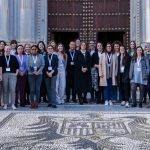
The NABIHEAL Project Pioneers Wound Healing with New Biomimetic Matrices
Nearly 40 scientists across 7 countries are pioneering this breakthrough in wound healing using a nobel and affordable bio-inspired, anti-bacterial matrix. In addition to the vast consortium, the project also comprises 5 small and medium-sized enterprises (SMEs) and 9 academic institutions. These were convened last February at the University of Granada to share insights, progress, and strategies. According to an article published by UGR at the beginning of this month, about 40 researchers involved in the project have attended a meeting to share results and progress. The Horizon Europe project NABIHEAL, coordinated by the Biomedical Research Networking Center (CIBER) at[...]
08 Nov
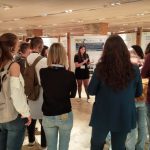
Impactful research with NANBIOSIS participation in the Poster Tour of CIBER-BBN & CIBEREHD Annual Conference.
2023 CIBER-BBN Annual meeting has taken place at Santemar Hotel, in Santander during November 6-7. This year the format of our annual conferences has been changed towards a collective event scheme between the CIBER-BBN and CIBEREHD thematic areas. On Monday 6 the scientific sessions werecommon for EHD and BBN, with appealing contents for the mixed audience. On Tuesday 7 EHD and BBN sessions will specific for each area in separate rooms (with common coffee break). Posters of both areas were on display in the exhibit hall throughout the entirety of the Annual Meeting. Moreover, at the “Posters & beers” session (Monday[...]
08 Nov
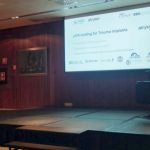
NANBIOSIS sesion in the CIBER-BBN and CIBEREHD annual meeting. SAFE-N-MEDTECH Project: Outcomes and Future Prospects.
The annual conference of the scientific áreas of CIBER (the most important Centre for Biomedical Research in Spain) are hotly awaited every year for the CIBER community as a foro to be updated about emerging key technologies and discuss about research lines and results, find new opportunities to collaborate and join efforts towards common objectives. Moreover, this year, the Annual Conference of CIBER-BBN (Bioengineering, Biomaterials and Nanomedicine) has been organized as a collective event scheme together with the scientific area of CIBEREHD (Digestive and Liver Diseases). Both areas have already shared experiences of collaborative projects, demonstrating the complementarity of their fields.[...]
03 Jun
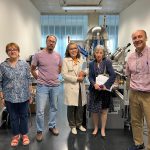
Representatives of the Ministry of Science and Innovation visited unit 16 of NANBIOSIS
On May 16 representatives of the General Subdirectorate of Large Scientific-Technical Facilities of the Ministry of Science and Innovation visited unit 16 of NANBIOSIS (created by Centro de Investigación Biomédica en Red -CIBER-, and the University of Extermadura). Mrs. Beatriz Albella Rodríguez and Mrs. María Jesús Marcos Crespo, got to know first-hand the facilities of unit 16 of the CTS NANBIOSIS of “Surface Characterization and Calorimetry“ . The visit was guided by the Scientific Director of Unit 16 of NANBIOSIS, Maria Luisa González Martín, and by Mr. Javier de Francisco Morcillo, Director of the Secretariat for Scientific Infrastructure and Technologica[...]
12 May

NABIHEAL project launches website
The website for NABIHEAL, an EU-funded Horizon Europe project developing biomaterials for complex wound healing, is now online. The Horizon Europe project NABIHEALi project is coordinated by the Center for Biomedical Research Network (CIBER) at the Institute of Materials Science of Barcelona (ICMAB-CSIC). This project will apply one the “Cutting Edge Biomedical Solutions” of NANBIOSIS for the preparation of different nanoestructures with antimicrobial properties, required for the development of the final multifunctional wound healing biomaterials. This case will gather the expertise of two NANBIOSIS unit: NANBIOSIS U6 will produce and characterize these nanoestructures with antimicrobial properties, which will be tested in NANBIOSIS U16. Find out mor[...]
24 Mar
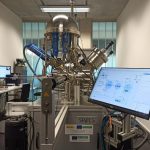
NANBIOSIS U16 enlarges its capacities with a new FlexPS-ARPES-E kit
NANBIOSIS unit 16 Surface Characterization and Calorimetry Unit form CIBER-BBN and University of Extremadura has recently incorporated new equipment acquired through the execution of the project FICTS1420-14-09, cofinanced with FEDER funds, the Ministry of Economy and Competitiveness and Junta de Extremadura, Regional Ministry of Economy, Science and Digital Agency. A new FlexPS-ARPES-E kit, manufactured by SPECS, is now available for use by researchers This new resource uses the technique of photoelectron spectroscopy generated by X-rays to analyze the chemical composition of a surface. The electrons given off by the irradiated surface generate a fingerprint of the molecules that make up that surface, yielding information[...]
16 Jan
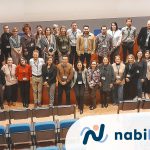
New European Project NABIHEAL in biomaterials for complex wound healing
The Horizon Europe project NABIHEAL, coordinated by the Center for Biomedical Research Network (CIBER) at the Institute of Materials Science of Barcelona (ICMAB-CSIC), was launched on 11-12 January 2023 in Barcelona with the first meeting of the international consortium, formed by 14 partners from 7 countries, including research centers, universities, and private companies. This project will apply one the “Cutting Edge Biomedical Solutions” of NANBIOSIS for the preparation of different nanoestructures with antimicrobial properties, required for the development of the final multifunctional wound healing biomaterials. This case will gather the expertise of two NANBIOSIS unit: NANBIOSIS U6 will produce and[...]
10 Aug
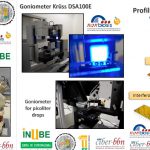
New leaflets available of new equipment at NANBIOSIS Unit 16
We are delighted to announce the publication of our new brochures which reflects the new equiments and capabilities incorporated to NANBIOSI U16 Surface Characterization and Calorimetry Unit. The equipment is available has been incorporated to the Unit thanks to European Regional Development Fund (FEDER) allocated by the Goberment of Spain for the development of ICTSs, specifically through the Project FICTS-1420-14-09. TOFSIMS_EN-1Download Profilometry_ENDownload Goniometer_ENDownload Further information: NANBIOSIS News[...]
